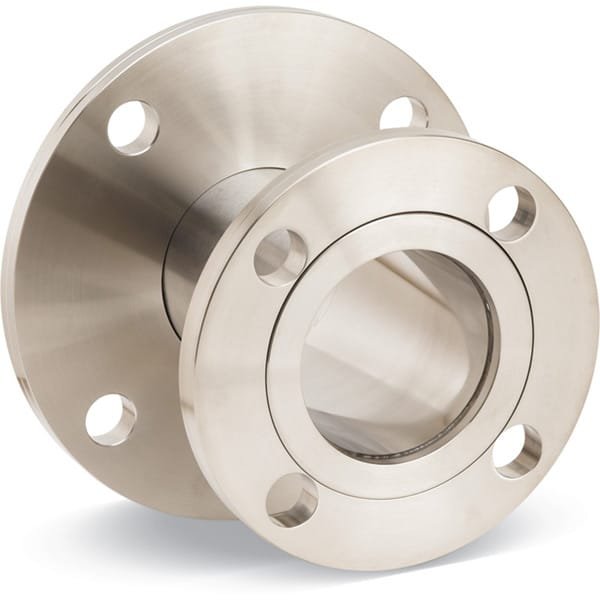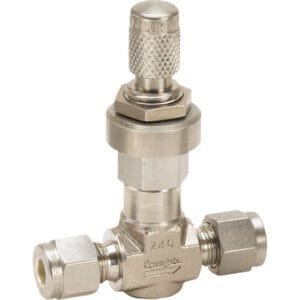ASA HV Reducer Full Nipples (Grooved Flanges): Dual-Grooved Connections for ASA Flange Size Transitions in High-Vacuum Systems
ASA HV Reducer Full Nipples (Grooved Flanges) from TFM are engineered for vacuum professionals who require size transitions between ASA flanges while maintaining consistent o-ring sealing. Constructed from 304L stainless steel tubing, these components provide robust mechanical strength, corrosion resistance, and excellent vacuum compatibility in high-vacuum (HV) environments.
Each nipple is fitted with two rotatable ASA flanges, both grooved to accommodate elastomeric o-rings. This dual-grooved configuration is ideal for mating with flat ASA flanges on either side, ensuring reliable sexed vacuum sealing across different flange sizes.
The reducer design allows for step-down or step-up connections between dissimilar ASA flange diameters (e.g., 10″ to 8″), helping to simplify system expansion, retrofitting, or port conversion.
Key Features of ASA HV Reducer Full Nipples (Grooved Flanges):
Dual Grooved ASA Flanges
Designed to interface securely with flat ASA flanges using o-rings, enabling a consistent, leak-tight seal in accordance with ASA vacuum standards.Reducer Geometry
Allows mating between two different flange sizes (e.g., 4″ to 6″, 6″ to 8″), making these nipples ideal for step transitions within vacuum piping systems.304L Stainless Steel Construction
Provides excellent durability, vacuum compatibility, and corrosion resistance in chemically aggressive or high-temperature applications.Rotatable Flanges for Ease of Installation
Both ASA flanges are rotatable to ensure precise alignment, particularly valuable in complex system layouts or tight spatial configurations.Vacuum-Grade Cleaned and Leak-Tested
Each ASA HV Reducer Full Nipple (Grooved Flanges) is helium leak tested and cleaned to meet the demands of sensitive HV systems.Available in Standard and Custom Configurations
Common reducer combinations and lengths are offered, with full customization options available for tube diameter, length, wall thickness, and flange pairing on request.
Applications:
Transition points between different ASA flange sizes
Foreline or chamber ports with hybrid interface requirements
Modular expansion or system retrofit in ASA-based vacuum setups
Diagnostic or pumping ports requiring size adaptation
Research, semiconductor, or aerospace vacuum systems
TFM also offers compatible flat ASA flanges, FKM or Buna-N o-rings, bolt kits, and blank-off plates to ensure full installation support and sealing integrity.
In conclusion, ASA HV Reducer Full Nipples (Grooved Flanges) offer a reliable and space-efficient solution for vacuum engineers seeking to bridge flange size differences without sacrificing seal performance. Their grooved flange design ensures consistent o-ring compatibility across your ASA-standard system.
Ordering Table





Reviews
There are no reviews yet.